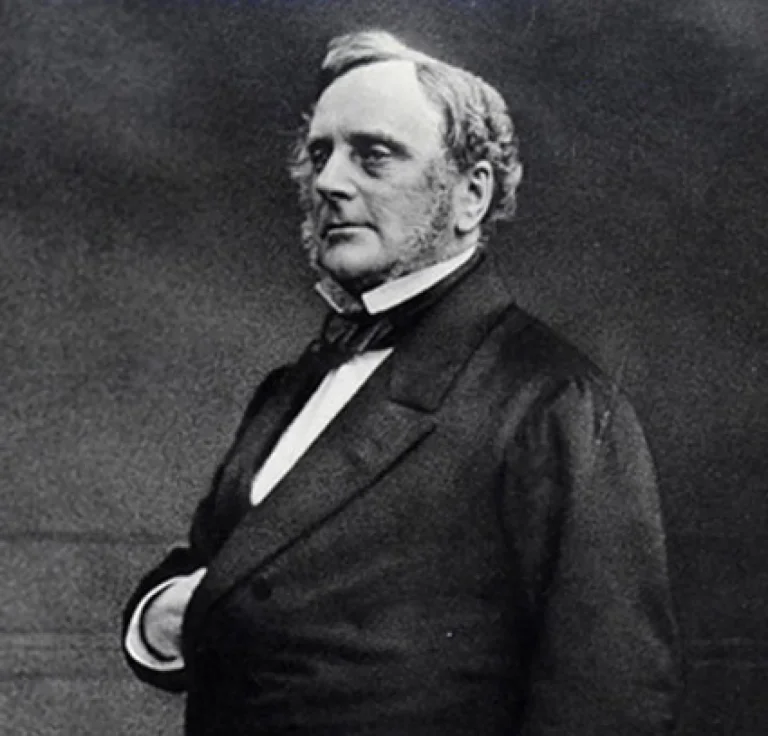
 When you think of ancient wonders, images of the majestic Pyramids of Giza often spring to mind. These colossal structures, symbols of pharaonic power and ingenuity, have captivated humanity for millennia.
When you think of ancient wonders, images of the majestic Pyramids of Giza often spring to mind. These colossal structures, symbols of pharaonic power and ingenuity, have captivated humanity for millennia.
But what if I told you that on the emerald isle of Ireland, there stands an Irish-made structure that predates these Egyptian marvels by centuries?
Prepare to have your perceptions of ancient history reshaped as we journey to the heart of Ireland’s Boyne Valley, home to a monumental enigma that whispers tales from over 5,000 years ago: Newgrange.
This isn’t just an old mound; it’s a sophisticated feat of engineering, astronomy, and spiritual devotion that challenges our understanding of prehistoric capabilities. Join us as we uncover the secrets of Newgrange, delve into its incredible history, and explore why this ancient Irish wonder is truly older than the pyramids.
The Mystery of Newgrange: A Glimpse into Ireland’s Deep Past
Nestled in County Meath, roughly an hour’s drive north of Dublin, lies one of the most significant prehistoric sites in Europe: Newgrange. Part of the larger Brú na Bóinne UNESCO World Heritage Site, this immense circular mound, crowned with lush green grass and encircled by standing stones, looks unassuming at first glance. Yet, beneath its verdant exterior lies a meticulously constructed passage tomb, a testament to a highly advanced Neolithic society.
The sheer age of Newgrange is what truly sets it apart. While the Great Pyramid of Giza was constructed around 2580–2560 BC, archaeological evidence, including radiocarbon dating, places the construction of Newgrange at approximately 3200 BC. This makes Newgrange at least 600 years older than the oldest pyramids of Egypt, a fact that often astounds visitors and historians alike. It stands as the undisputed oldest manmade structure in Ireland of its scale and complexity, a silent sentinel guarding secrets from a time long before written history.
A Monument to the Past: Who Built Newgrange?
So, who built Newgrange? The answer takes us back to Ireland’s Neolithic period, a time when early farming communities flourished on the island. These were not primitive cave dwellers, but sophisticated agriculturalists who possessed an astonishing understanding of engineering, astronomy, and communal organization. It was these skilled Neolithic farmers, not the later Celts (who arrived in Ireland millennia after Newgrange’s construction), who conceived, designed, and painstakingly built this monumental structure.
The construction of Newgrange would have been an enormous undertaking, requiring immense human effort and coordination. Thousands of tonnes of stone, including massive kerbstones weighing several tonnes each, were transported from distant locations. The sheer scale of the project suggests a well-organized society with a clear hierarchical structure and a shared belief system that motivated such monumental construction. These people were not just building a tomb; they were creating a lasting legacy, a connection to the cosmos, and a sacred space for their ancestors.
Architectural Marvel: Inside Newgrange and its Design
The true genius of Newgrange becomes apparent when you venture inside Newgrange. The exterior, with its imposing size (approximately 85 meters in diameter and 13.5 meters high) and surrounding kerbstones, hints at its grandeur. But it’s the internal structure that reveals the advanced architectural knowledge of its builders.
Visitors enter through a narrow, 19-meter-long (62-foot) passage that leads deep into the heart of the mound. This passage is constructed from massive orthostats (upright stones) and roofed with flagstones, demonstrating remarkable stability and precision. The passage gently inclines, leading to a cruciform chamber. This central chamber features three recesses, each containing large stone basins where cremated human remains and grave goods were likely placed.
One of the most astonishing aspects of Newgrange’s design is its remarkable watertight roof. Despite being over 5,000 years old, the chamber has remained almost completely dry. This is due to a sophisticated system of overlapping stones and grooves that channel water away, a testament to the builders’ understanding of drainage and construction techniques. This ingenious design, known as a corbelled roof, is a marvel of prehistoric engineering.
The Celestial Alignment: Newgrange Solstice
Perhaps the most famous and awe-inspiring feature of Newgrange is its precise astronomical alignment. The structure is oriented to capture the rising sun on the winter solstice. For a few precious minutes around December 21st, a narrow beam of sunlight penetrates a specially designed opening, known as the “roof box,” located above the main entrance. This shaft of light travels down the long passage, illuminating the central chamber.
The Newgrange Solstice phenomenon is not accidental; it’s a deliberate and incredibly precise alignment that speaks volumes about the astronomical knowledge of its builders. This annual event would have held profound spiritual and calendrical significance for the Neolithic people. It likely symbolized rebirth, the triumph of light over darkness, and the cyclical nature of life and death, reinforcing their connection to the natural world and the cosmos. The ability to predict and engineer such an event demonstrates a level of scientific understanding that is truly remarkable for its time.
Newgrange vs. The Pyramids: A Timeline Comparison
To truly grasp the antiquity of Newgrange, let’s place it on a global timeline:
- Newgrange: Approximately 3200 BC
- Stonehenge (earliest phases): Construction began around 3000 BC, with major phases between 2500-2000 BC.
- The Great Pyramid of Giza (Egypt): Constructed around 2580–2560 BC.
- Skara Brae (Orkney, Scotland): A Neolithic village, inhabited from approximately 3180 BC to 2500 BC.
- The Great Wall of China: Major construction began much, much later, during the Qin Dynasty (220–206 BC), with significant additions over subsequent centuries.
This timeline clearly illustrates that Newgrange predates the iconic Egyptian pyramids by a significant margin. It was built during a period when monumental architecture was emerging in various parts of the world, but Newgrange stands as one of the earliest and most sophisticated examples.
More Than Just a Tomb: Passage Tombs Ireland
Newgrange is not an isolated monument; it is the most famous of a complex of structures known as passage tombs Ireland. The Boyne Valley, or Brú na Bóinne, is home to two other equally impressive, though less famous, large passage tombs: Knowth and Dowth.
- Knowth: This site features a massive central mound, similar in scale to Newgrange, surrounded by 18 smaller satellite tombs. Knowth is renowned for its incredible collection of megalithic art, with over 200 decorated stones, making it the largest collection of Neolithic art in Western Europe. It has two passages, aligned with the spring and autumn equinoxes, suggesting an even more complex astronomical observatory than Newgrange.
- Dowth: While less excavated than Newgrange and Knowth, Dowth is another substantial passage tomb with two passages leading to separate chambers. It also exhibits megalithic art and shares the same astronomical significance, though its alignments are less precisely understood due to past disturbances.
These oldest burial mounds in Ireland represent a profound cultural and spiritual landscape created by the Neolithic people. They served multiple purposes: as burial sites for the elite, as ceremonial centers, and as astronomical observatories, deeply connecting the living with the dead and the terrestrial with the celestial. Their sheer number and complexity underscore the advanced nature of the society that built them.
10 Facts About Newgrange
To truly appreciate this ancient wonder, here are 10 facts about Newgrange that highlight its extraordinary nature:
- Older Than the Pyramids: Newgrange was built around 3200 BC, making it approximately 600 years older than the Great Pyramid of Giza.
- Part of a Complex: It’s one of three main large mounds in Brú na Bóinne, alongside Knowth and Dowth.
- Winter Solstice Alignment: Its most famous feature is the precise alignment with the sunrise on the winter solstice, illuminating the inner chamber.
- Astronomical Calendar: This alignment suggests its use as an ancient calendar, marking the shortest day of the year.
- Watertight Roof: The corbelled roof of the inner chamber has kept the interior dry for over 5,000 years, a testament to its sophisticated engineering.
- Megalithic Art: The stones at Newgrange are adorned with intricate megalithic art, including spirals, lozenges, and zigzags, whose meanings are still debated.
- Not a Dwelling: Despite its size, Newgrange was not a living space but likely a ceremonial site and a tomb for important individuals.
- Discovered in 1699: The entrance to Newgrange was rediscovered accidentally in 1699 by a local landowner searching for building stone.
- UNESCO World Heritage Site: Brú na Bóinne, including Newgrange, Knowth, and Dowth, was designated a UNESCO World Heritage Site in 1993.
- Pre-Celtic Builders: It was constructed by Neolithic farmers, long before the arrival of the Celts in Ireland.
The Enduring Legacy: Where is Newgrange in Ireland?
Newgrange is located in County Meath, in the Boyne Valley, approximately 8 km (5 miles) west of Drogheda and 40 km (25 miles) north of Dublin. It is easily accessible from Dublin via guided tours or by car, making it a popular day trip for those interested in ancient history and archaeology. The visitor center, Brú na Bóinne Visitor Centre, provides comprehensive information and organizes guided tours to the monument.
The enduring legacy of Newgrange is immense. It stands as a powerful symbol of Ireland’s deep and rich history, showcasing the incredible ingenuity and spiritual depth of its earliest inhabitants. It challenges the notion that complex civilizations only emerged in the Near East, demonstrating that sophisticated societies were thriving in Western Europe millennia ago. For anyone seeking to connect with ancient history, to witness a feat of prehistoric engineering, or simply to marvel at human ambition, Newgrange offers an unparalleled experience. It is a reminder that the past holds many secrets, and some of the most profound are found not just in the deserts of Egypt, but also beneath the green fields of Ireland.
FAQs: Your Questions About Newgrange Answered
What is older than the Pyramids in Ireland?
Newgrange is older than the Pyramids in Ireland. Constructed around 3200 BC, it predates the Great Pyramid of Giza (c. 2580–2560 BC) by approximately 600 years.
What is the oldest manmade structure in Ireland?
The oldest large-scale manmade structure in Ireland is Newgrange, built around 3200 BC. There may be older, smaller archaeological features, but Newgrange is the most significant ancient monument.
What is the oldest thing found in Ireland?
The oldest archaeological evidence of human presence in Ireland dates back to the Mesolithic period (Middle Stone Age), around 8000 BC, with findings of flint tools and other artifacts. However, Newgrange is the oldest substantial man-made structure.
What is older than the Pyramids?
Many ancient structures and civilizations are older than the Pyramids. Besides Newgrange in Ireland, other examples include Göbekli Tepe in Turkey (c. 9500–8000 BC), parts of Stonehenge in England (earliest phases c. 3000 BC), and the Neolithic village of Skara Brae in Scotland (c. 3180 BC).
Is Newgrange the oldest building in the world?
While Newgrange is one of the oldest and most impressive freestanding structures in the world, it is not the absolute oldest known “building.” Sites like Göbekli Tepe in Turkey, with structures dating back to around 9500 BC, are significantly older. However, Newgrange is often cited as the oldest intact and roofed building of its scale.
What civilization is older than the pyramids?
The civilization that built Newgrange was the Neolithic people of Ireland, who were agriculturalists. This civilization flourished in Ireland long before the rise of the Old Kingdom in Egypt, which constructed the pyramids. Other civilizations/cultures older than the pyramids include those responsible for Göbekli Tepe, early Mesopotamian city-states, and the builders of early megalithic structures across Europe.
How old are the pyramids in Ireland?
There are no true “pyramids” in Ireland in the traditional Egyptian sense. The ancient structures like Newgrange are large, circular passage tombs or mounds, not pointed pyramids. Newgrange is approximately 5,200 years old (built around 3200 BC).
What is older, Stonehenge or Pyramids?
Newgrange (c. 3200 BC) is older than both the main construction phases of Stonehenge (earliest phases c. 3000 BC, major phases 2500-2000 BC) and the Great Pyramid of Giza (c. 2580–2560 BC). Between Stonehenge and the Pyramids, the earliest parts of Stonehenge predate the Great Pyramid.
Who was in Ireland before the Celts?
Before the arrival of the Celts (who are thought to have arrived in Ireland much later, perhaps around 500 BC), Ireland was inhabited by various prehistoric peoples. The most notable were the Mesolithic hunter-gatherers and, crucially for Newgrange, the Neolithic farmers who built the great passage tombs and other megalithic structures.
Are the pyramids older than Skara Brae?
No, Skara Brae, a Neolithic village in Orkney, Scotland, was inhabited from approximately 3180 BC to 2500 BC. This means its earliest phases are roughly contemporary with, or slightly older than, the construction of the Great Pyramid of Giza (c. 2580–2560 BC). Newgrange is also older than the pyramids and contemporary with early Skara Brae.
What’s older, pyramids or great wall?
The Pyramids are significantly older than the Great Wall of China. The Great Pyramid of Giza was built around 2580–2560 BC. Major construction of the Great Wall began much later, during the Qin Dynasty (220–206 BC), with extensive additions and reconstructions occurring over many centuries.
Did the Celts build Newgrange?
No, the Celts did not build Newgrange. Newgrange was constructed by Neolithic farmers around 3200 BC. The arrival of the Celts in Ireland occurred much later in history, likely starting around 500 BC or even later, long after Newgrange had been completed and in use for millennia.
Are there pyramids in Ireland?
No, there are no true pyramids in Ireland. The significant ancient structures in Ireland, such as Newgrange, Knowth, and Dowth, are large passage tombs or mounds, typically circular in shape, rather than the pointed, triangular structures associated with Egyptian pyramids.



